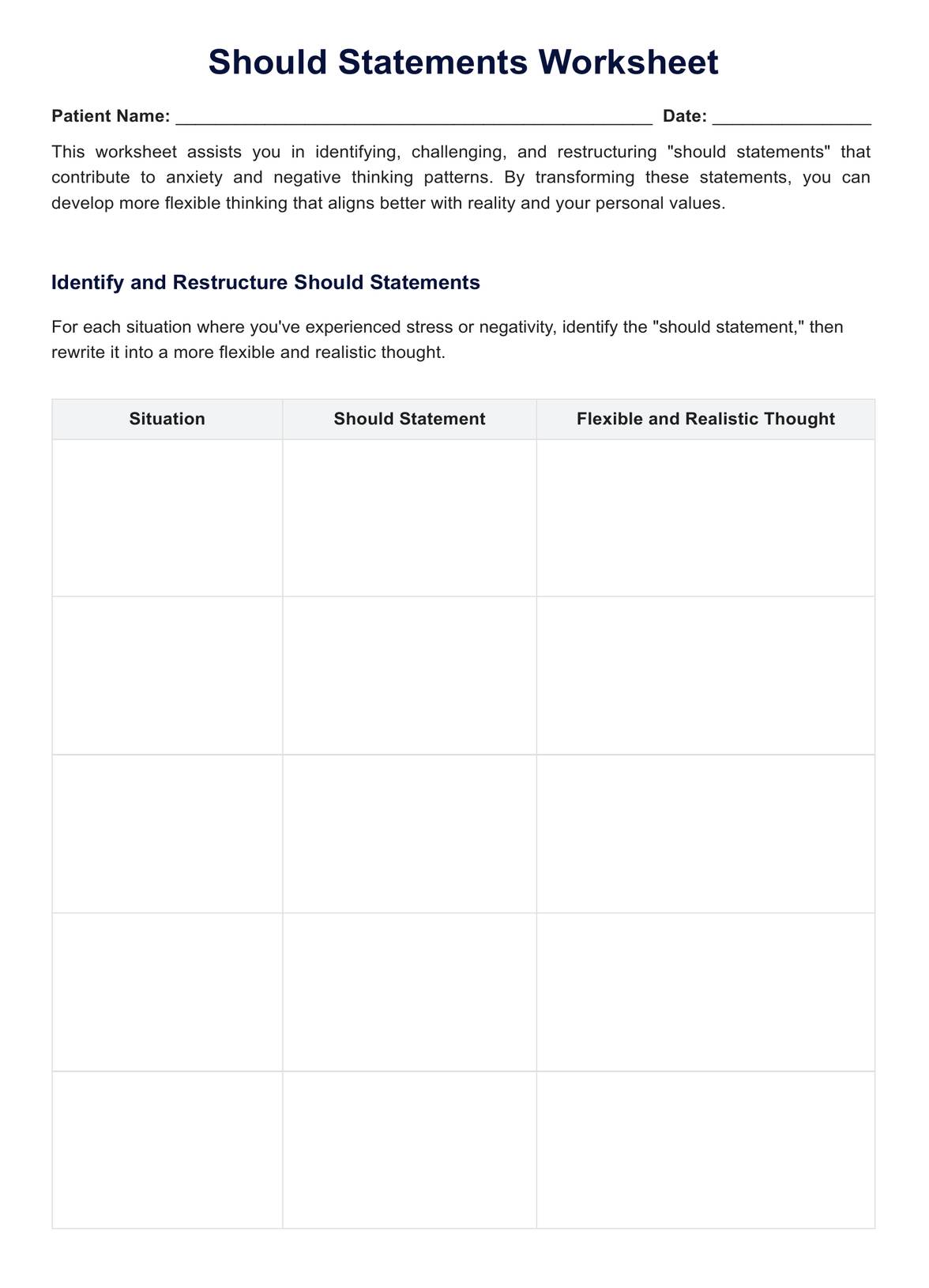A should statement is a cognitive distortion where individuals impose a negative thinking pattern of rigid and often unrealistic expectations on themselves or others, typically leading to feelings of guilt or failure when these expectations are not met.

Should Statements Worksheet
Learn to identify and reframe "should" statements with our Should Statements Worksheet, designed to help you foster more realistic and flexible thinking.
Use Template
Should Statements Worksheet Template
Commonly asked questions
To manage should statements, identify and challenge their validity, reframe them into more flexible and realistic thoughts, and practice mindfulness to reduce their impact on your emotional well-being.
Should statements are also known as "mustrubation," "necessitous thinking," "self-commands," and "injunctions," reflecting their demanding and often counterproductive nature.
EHR and practice management software
Get started for free
*No credit card required
Free
$0/usd
Unlimited clients
Telehealth
1GB of storage
Client portal text
Automated billing and online payments











